Environment
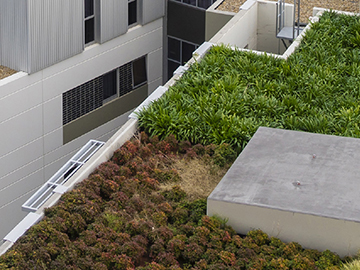
Real estate - more energy with a new green element
In the case of real estate that we manage as asset managers, we have already switched to a sustainable energy supply (electricity and heat) as far as possible. A possible energy and ecological optimisation can take place, for example, in upcoming roof renovations, through the formation of an extensive green roof.
With regard to the electricity demand of the real estate we manage, we have converted a total of 880,897 kWh to green electricity by the end of 2023. At 370 g CO2/kWh (German electricity mix – as of 2023), this corresponds to an annual saving of 270.64 t CO2.
In the case of natural gas, we have offset CO2 emissions for a total consumption of 998,702 kWh by the end of 2022. At 251 g CO2/kWh (GEMIS factor), this corresponds to an annual compensation of 326 t CO2.
In the case of our leasing portfolios, we make our know-how available in a targeted manner, so that the user (lessee) can make a sound decision about which building optimisations are made.
Real estate - identifying potential
New objects that we acquire for our investment funds undergo an examination process. In addition to the usual technical due diligence, an extended purchase examination is carried out under ESG criteria. This examination includes energy efficiency, water consumption, CO2 emissions, building materials, building equipment, operating costs, tenant comfort and connectivity. Moreover, acquisition objects are assessed by the LHI ESG Scoring Model.
By addressing ESG standards at an early stage, we:
- Identified essential drivers and factors of influence for the ESG strategy
- Established a presence in the market through talks with multipliers and investors
- Evaluated catalogues of requirements for sustainable investments
- Selected qualified service partners for operative accompaniment and implementation
- Achieved transparency through operating cost analysis of portfolio objects
- Already incepted one impact (Article 9) fund and two ESG strategy (Article 8) funds as special AIFs in the real estate sector and more are being planned
- Converted 27 objects to sustainable energy supply
- Completed the operative groundwork, for example drafting of a standard lease agreement with green lease elements pursuant to ZIA recommendations
- Implemented first energy optimisation measures
- Started the smart meter roll-out for the digitalisation of our portfolio holdings
- Implemented tenant surveys
- Subjected a large part of the portfolio to a CO2 analysis
- Implemented ESG management software
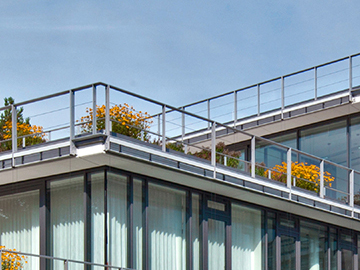
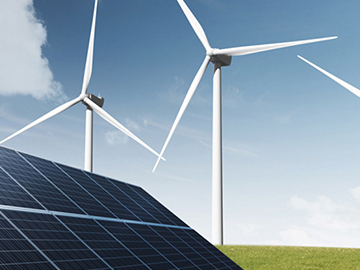
Renewable energies - the best way
The long-term and, above all, sustainable securing of our energy supply is a central issue. Investments in renewable energies can contribute to making them an essential part of the energy supply. They create the conditions for conserving fossil resources and make a valuable contribution to the national economy in coping with the energy turnaround.
LHI has so far concentrated on solar and wind in the renewable energies asset class. Since 2020, hydropower plants have also been part of the portfolio. These are characterised by long life cycles. In this context, it is important to us that interventions in nature, for example by damming up water or changing a riverbed, are carried out gently.
For renewable energies, sustainability also means not only making use of resources, but also ensuring that a responsible approach is taken to the use of the land. The dismantling of the parks, the restoration of the leased areas and the proper disposal of the components at the end of their service life are a matter of course for us. In 2023, the wind and solar parks managed by LHI produced electricity for a total for over 350,000 4-person households, thus saving around 570,000 tonnes of CO2.
Renewable energies – responsible all along the line
The transport sector also plays an important role in sustainable management. LHI focuses here on providing the necessary infrastructure and acquired six fast charging parks with ten charging points each for an individual mandate in 2022.
A next step will be the storage of energy. We are closely monitoring developments and looking at investing in storage systems either as part of a solar or wind farm or as a separate unit to stabilise the energy supply.
Two impact (Article 9) funds and an ESG strategy (Article 8) fund have already been launched as special AIFs in the renewables sector, and more are planned.
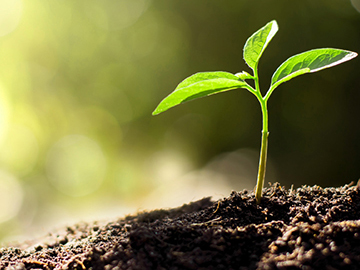

Aviation - useful and helpful
Air transport is indispensable for the transportation of freight and in the medical sector. Passenger transport has also been established for many years and brings people closer together worldwide. What matters is the sensible use of resources and the use of modern, innovative technology.
Aviation - achieving more with new technology
LHI's financing solutions mean that aircraft, engines and helicopters are used that emit significantly less CO2 and consume less paraffin. For example, we make sure that for new products of our own we only invest in engines that are technologically capable of burning CO2-neutral, synthetic fuel. We have already implemented this requirement by investing in two brand-new A 220-300 aircraft and an AH 145 helicopter. New aircraft, engines and helicopters are also lighter and use more efficient and environmentally friendly materials, which also has a positive effect on reducing noise emissions.


Aviation - using raw materials and conserving resources
An increasingly important aspect is the topic of recycling in the aviation industry. An abundance of
high-quality materials is installed in aircraft. By recovering these materials, such as aluminium,
titanium and steel, important raw materials can be further processed. The aim is not only to
recover individual components of an aircraft, but to use all the materials installed. For modern air-
Environment craft, it is assumed that about 92 % of the parts used can be recycled. The recycling rate is particularly high when older passenger aircraft are converted into cargo aircraft.
Working environment - clever technology for the environment
The LHI headquarters in Pullach has been awarded the German Sustainable Building Council (DGNB) platinum certificate. In terms of ecological quality, the building achieves a score of 96.5%. The following measures have been implemented:
- We only use certified green electricity
- The LHI Campus is connected to the public geothermal district heating network of the Pullach municipality. A building core activation system is used for basic temperature control.
- For the offices, the air is pre-treated via geothermal heat exchangers (EWT). The supply air systems are decentralised to the building components, the exhaust air systems are located centrally in the roof space together with the heat recovery system.
- The ventilation via EWT can be used energy-efficiently for heating in winter and cooling in summer. In this process, the outside air is brought to a temperature of 10° C difference to the outside air in each of the EWT tubes running under the building - depending on the season, this pre-tempered air is thus warmer or cooler than outside. In summer, the pre-tempered air is either used directly for cooling or mixed with the warm outdoor air. In winter, on the other hand, it can be heated in an energy-saving way instead of cold outside air. In this way, a temperature of approx. 21° to 26° C is achieved in the building at all times of the year.
- Energy-saving LEDs are predominantly used as light sources.
- All flat roofs are designed as green roofs.
- In 2023, a PV system was put into operation on the roofs of the Pullach Campus.
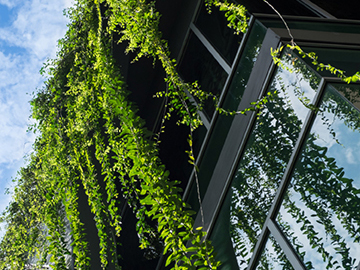
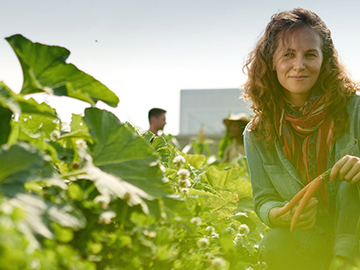
Working environment - lived sustainability
No environmentally harmful pesticides or the like are used in the maintenance of our outdoor facilities. Our food suppliers are certified according to IFS, TÜV SÜD, SGS Organic Austria or the German Accreditation Body DAkkS and are members of the Association for Organic Farming and Healthy Nutrition (registered association).
Charging facilities for electric vehicles have been available at our company headquarters in Pullach since 2016. Further wallboxes were installed in 2022. Employees and guests can currently charge their electric vehicles at 25 wallboxes during their time of presence at cost price. For this purpose, we use electricity from our own rooftop PV system or purchased green electricity from 100% hydropower.